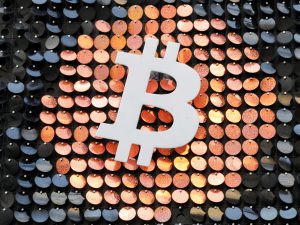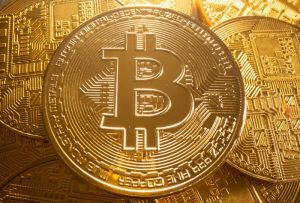The collapse of TerraUSD (UST) and a linked cryptocurrency called Luna shook the foundations of the $155 billion stablecoin market.
The evisceration of the supposedly safe stablecoin began on May 7, sending shockwaves through the crypto industry. Days later Luna was virtually worthless while UST has plummeted to $0.07 from $1.
Exactly how they unraveled is complicated and convoluted. Easier to understand is that the collapse triggered one of the most stunning crypto crashes in the market’s short history, wiping almost $700 billion off the market capitalisation of crypto assets in a week.
Until they fell, UST and Luna had seemed unstoppable, with Luna among a select few cryptocurrencies with a positive return this year.
UST’s market cap had soared to a high of almost $19 billion in April from $180 million at the start of 2021, while Luna’s price surged 138-fold to reach a market cap of $41 billion.
The subsequent implosion has prompted some analysts to warn of a long ‘’crypto winter’’ of sustained price falls that may set back the industry for years. Others say the crash is a temporary setback that’s not so surprising for an emerging asset class that’s suddenly confronting rising inflation, interest-rate hikes and the risk of recession.
A brash South Korean called Do Kwon, 30, co-founded the terra blockchain ecosystem in 2018, and called USD “my greatest invention.’’ He even named his daughter after the Luna token, tweeting at the time, “My dearest creation named after my greatest invention.”
Now he’s the target of a lawsuit in South Korea
“I am heartbroken about the pain my invention has brought on all of you,’’ he tweeted in the aftermath of the crash. “I still believe that decentralized economies deserve decentralized money – but it is clear that $UST in its current form will not be that money.’’
The following is an account of how the collapse came about, and what it means for the future of the stablecoin market:
Also on AF: Crypto Mogul Suffers ‘History’s Biggest Wealth Loss’ – CNW
How Terra-Luna Was Supposed to Work
Stablecoins come in three types: those backed by assets, those backed by cryptocurrencies, and those using an algorithm. UST was in the riskier, algorithmic category, and did not have reserves to back it, instead using a complex system of minting, and redeeming new tokens to maintain its value at US$1.
An arbitrage mechanism involved a promise that one UST could be converted into $1 worth of Luna. In theory, this meant that UST would be able to maintain its $1 value no matter the market conditions it confronted.
What Went Wrong?
In practice things turned out very differently. Terra was flawed and some investors, including Kevin Zhou of Galois Capital, had been warning about its risks for months. In an April 22 article on Coindesk, Zhou was quoted saying that he expected UST to “collapse on its own, but if someone attacks it, it will collapse even faster.’’
To help maintain the peg, UST’s so-called Anchor Protocol paid yields in the region of 20% to holders of UST that staked, or deposited, their tokens. This outsized yield attracted more than $10 billion of assets from speculators, says London-based alternative asset manager Fasanara Capital.
“That capital was mercenary and would de-risk at the first sight of worsening conditions, rotating into the next hot thing with better yield,’’ it said in a note after the crash.
“I wouldn’t say it was a Ponzi scheme,” says crypto expert and author David Gerard. “But it worked exactly like a Ponzi scheme in that existing investors were paid only from money from new investors.”
What Triggered the UST Stablecoin Crash?
After some very large sales of UST caused its price to drop below $1, its arbitrage mechanisms failed, triggering sales of Luna and undermining confidence in both, said lawyers with Chicago-based law firm Mayer Brown in a May 19 paper.
As questions over the sustainability of the yield emerged, holders of UST started withdrawing from Anchor, causing it to become unpegged from the dollar on May 9, said Bank of America Securities analysts led by Alkesh Shah in New York in a May 17 note.
“This caused a type of bank run with holders of UST seeking to exit even at prices lower than $1, the supply of LUNA increasing exponentially, and the value of both declining precipitously,’’ said the Mayer Brown lawyers.
The Terra ecosystem’s so-called Luna Foundation Guard had built up a war chest of about $3 billion Bitcoin to protect the peg in a worst-case scenario. That’s exactly what came to pass, with the unleashing of about $1.5 billion of Bitcoin in a vain attempt to maintain the peg.
Also on AF: Trash-Talking Crypto ‘Whiz’ Created a $40bn Crash – NYT
There’s been much online speculation that heavyweight institutions may have engineered the collapse to make a killing. And once the Bitcoin sales to defend the peg helped drive down its price, shorts stood to profit handsomely.
“Someone noticed this and realized they can make money,” said Gerard. “They knew the backup was a lot of Bitcoin and Anchor would have to sell Bitcoin to defend the peg, which would push down the value of Bitcoin.”
BlackRock posted a statement on Twitter to deny any involvement. “Rumors that we had a role in the collapse of UST are categorically false,’’ it said “In fact, BlackRock does not trade UST.”
Citadel and Gemini issued similar statements.
What’s the Stablecoin Crash Mean for the Sector?
“Stable coins will become a top priority for regulators now,” says Mike Boroughs, managing partner of wealth management firm Fortis Capital Management. “I would not be surprised if Congress says stable coins require a banking license, or even just makes them illegal in the US.”
The Biden administration has already published a position paper urging Congress to pass legislation requiring stablecoins be issued only by licensed banks. Testifying to the House Financial Services committee after the Luna collapse, US Treasury Secretary Janet Yellen called for a “comprehensive framework” of regulations to “guard against the risks.”
More recently, Bank of France governor François Villeroy de Galhau characterized the Luna collapse as “a wake-up call for the urgent need for global regulation.”
But banning algorithmic stablecoins would be premature and could hinder the ecosystem’s growth, says BofA’s Shah.
“We expect stablecoin regulation to lead to enhanced disclosures for algorithmic stablecoins that are undercollateralized like UST,’’ he says. “But an outright ban seems unlikely.’’
Despite the carnage he’s left behind, founder Do Kwon remains optimistic about the blockchain ecosystem he created.
“Terra’s focus has always oriented itself around a long-term time horizon, and another setback this May, similar to last year, will not deter the #LUNAtics,” he tweeted on May 11, referring to an army of supporters known as “Lunatics.” “Short-term stumbles do not define what you can accomplish. It’s how you respond that matters. Terra’s return to form will be a sight to behold.”
- By Neal McGrath and Kevin Hamlin






















